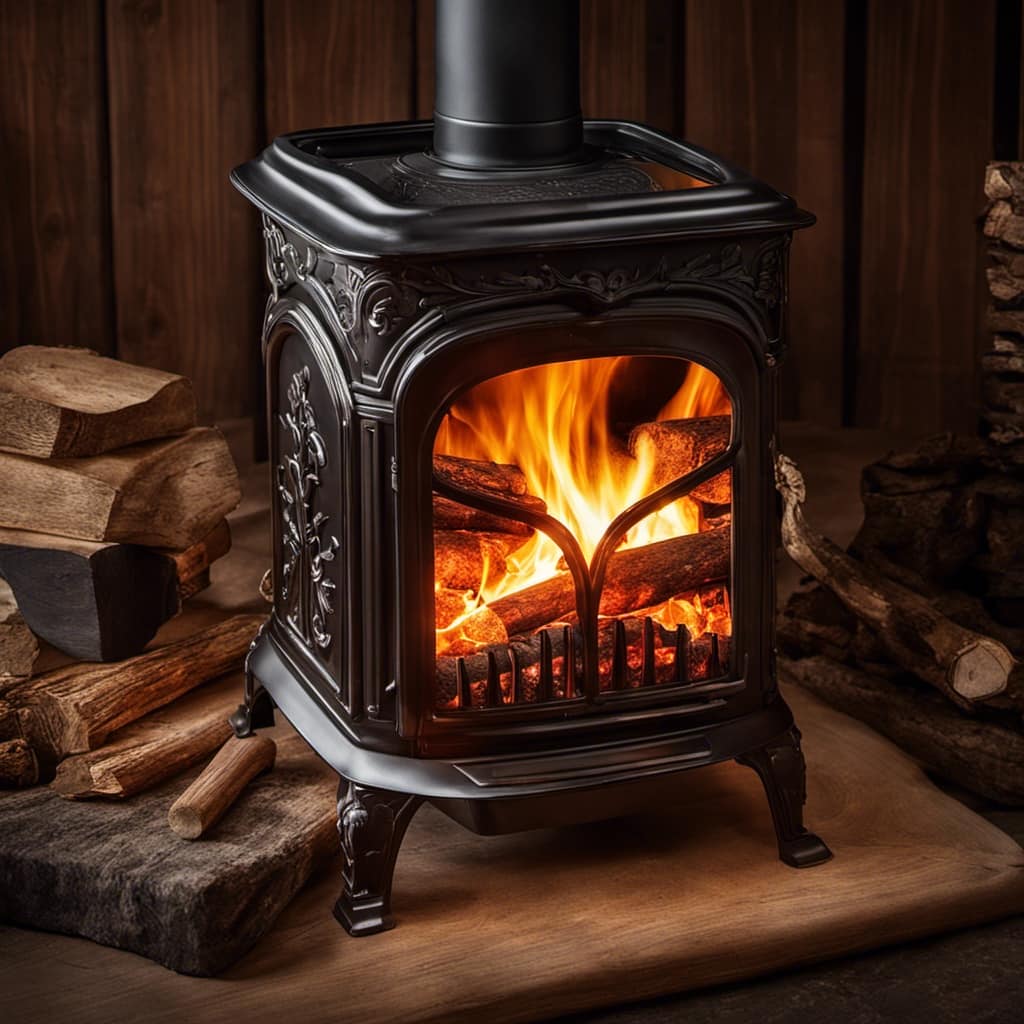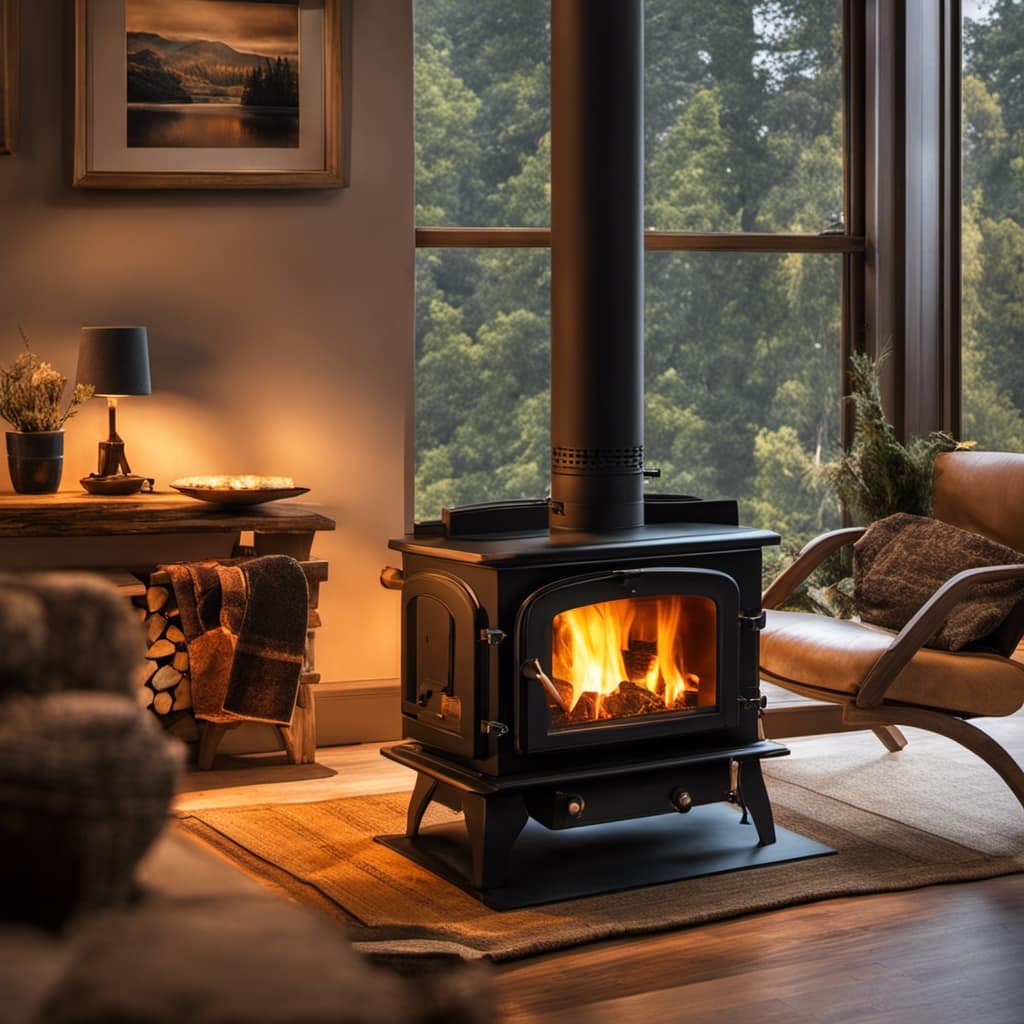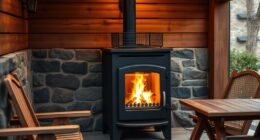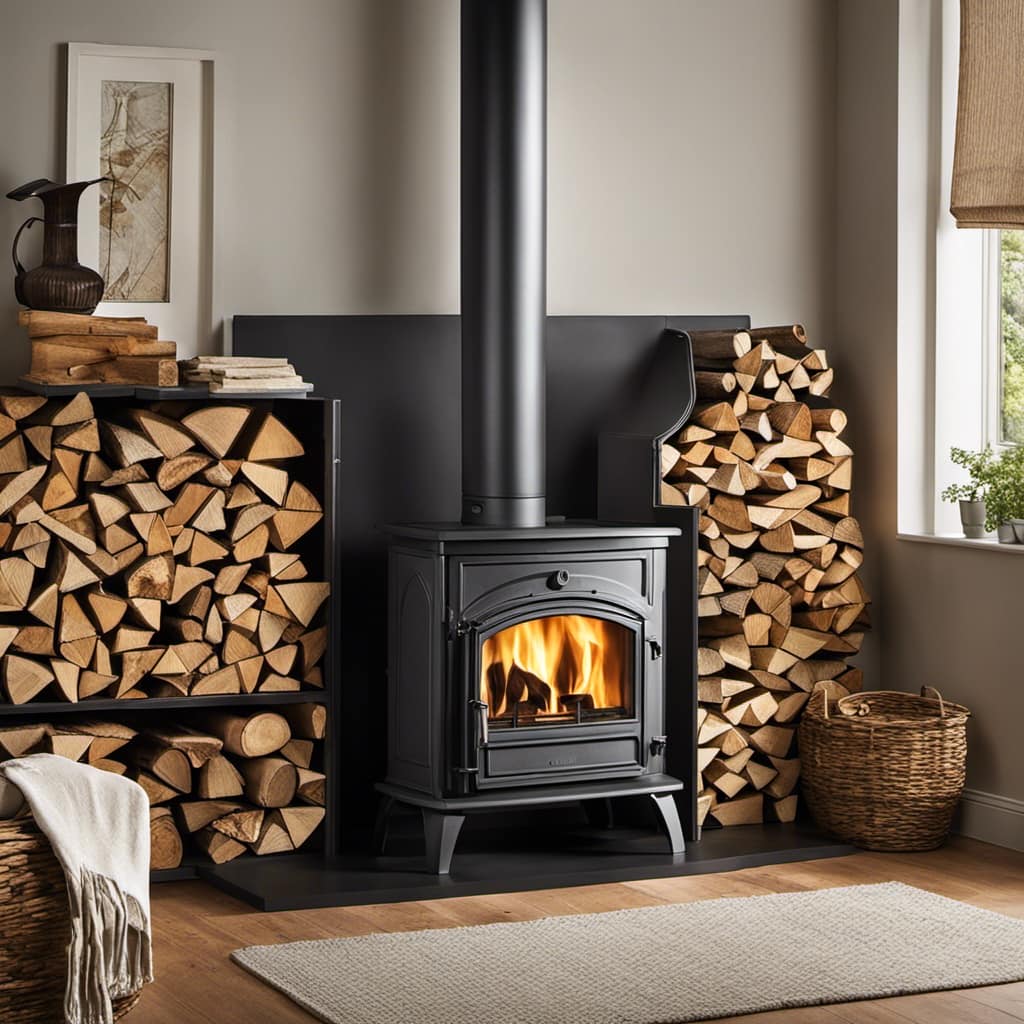
Hello there!
So you’ve got a wood stove, and sometimes the fire just gets a little too intense, right? Well, no worries, my friend. I’ve got some tips and tricks up my sleeve to help you slow that fire down and keep things nice and cozy.
From understanding the airflow to controlling the damper and adjusting the fuel, I’ll walk you through all the steps you need to know.
So let’s dive in and tame that fiery beast!
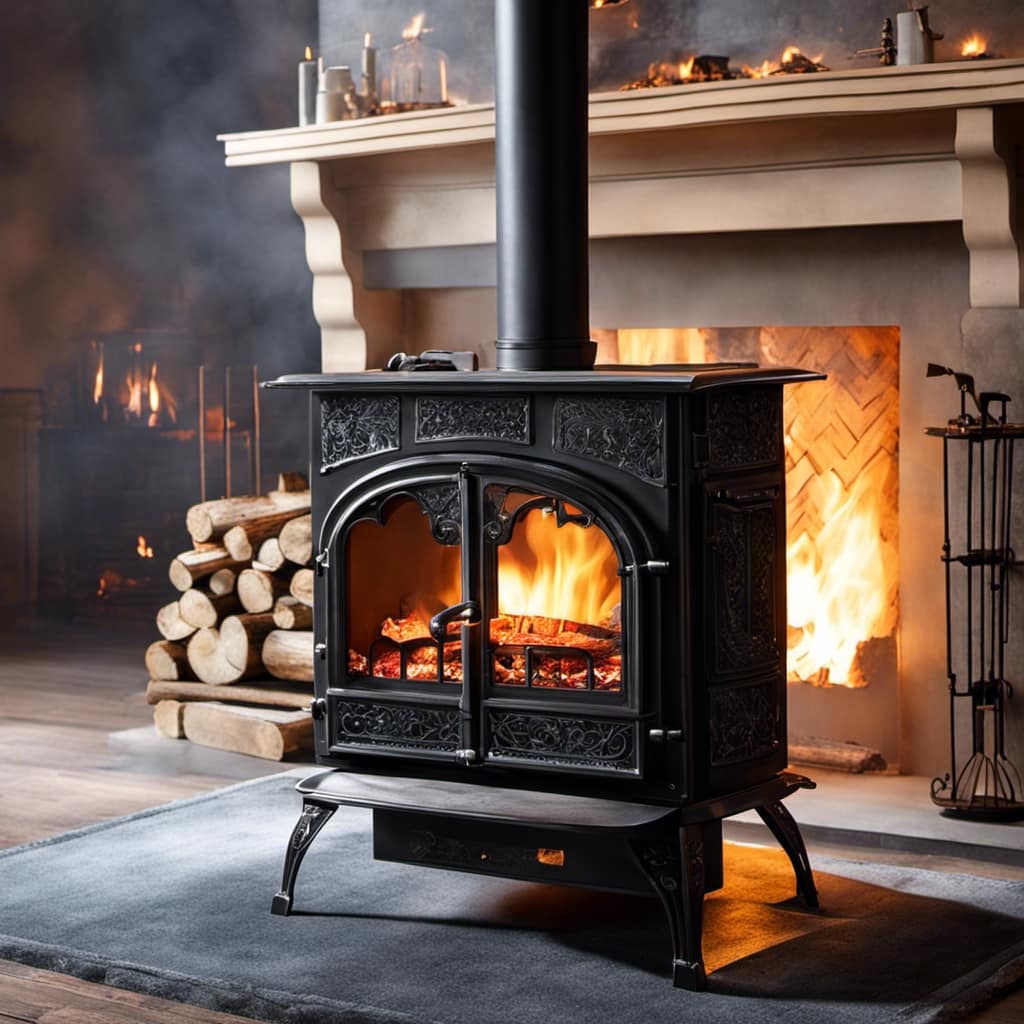
Key Takeaways
- Proper ventilation and airflow through vents are essential for regulating the fire and maintaining a steady burn in a wood stove.
- Firebricks made from refractory ceramic materials help regulate heat and slow down the fire in a wood stove.
- Regular maintenance of the damper, including cleaning and checking for obstructions, is crucial for optimal functioning.
- Adjusting the fuel, such as using seasoned firewood with around 20% moisture content or exploring alternative fuel sources, can help slow down the burn rate in a wood stove.
Understanding the Airflow in Your Wood Stove
I can feel the air flowing into my wood stove through the vents. Maintaining proper ventilation is crucial when it comes to ensuring air circulation in the wood stove. It helps to regulate the fire and maintain a steady burn.
One way to control the fire in a wood stove is by using firebricks. These bricks play a vital role in regulating heat and slowing down the fire. Firebricks are made from refractory ceramic materials that can withstand high temperatures.
Controlling the Damper: A Crucial Step to Slowing the Fire
Controlling the damper is crucial for reducing the intensity of the flames in my fireplace. To ensure that the damper functions optimally, regular maintenance is essential. Keeping your wood stove’s damper in top condition involves checking for any obstructions or debris that may impede its movement. It’s important to clean the damper regularly to remove any soot or creosote buildup that can restrict airflow. Additionally, inspecting the gasket seal and replacing it if necessary will help maintain proper control over the fire.
While the damper is the primary method for slowing down a fire in a wood stove, there are alternative methods to consider. One such method is using a fire screen or glass door to regulate the amount of oxygen reaching the fire, thus reducing its intensity. Another option is adjusting the damper position gradually to find the right balance between airflow and heat output.
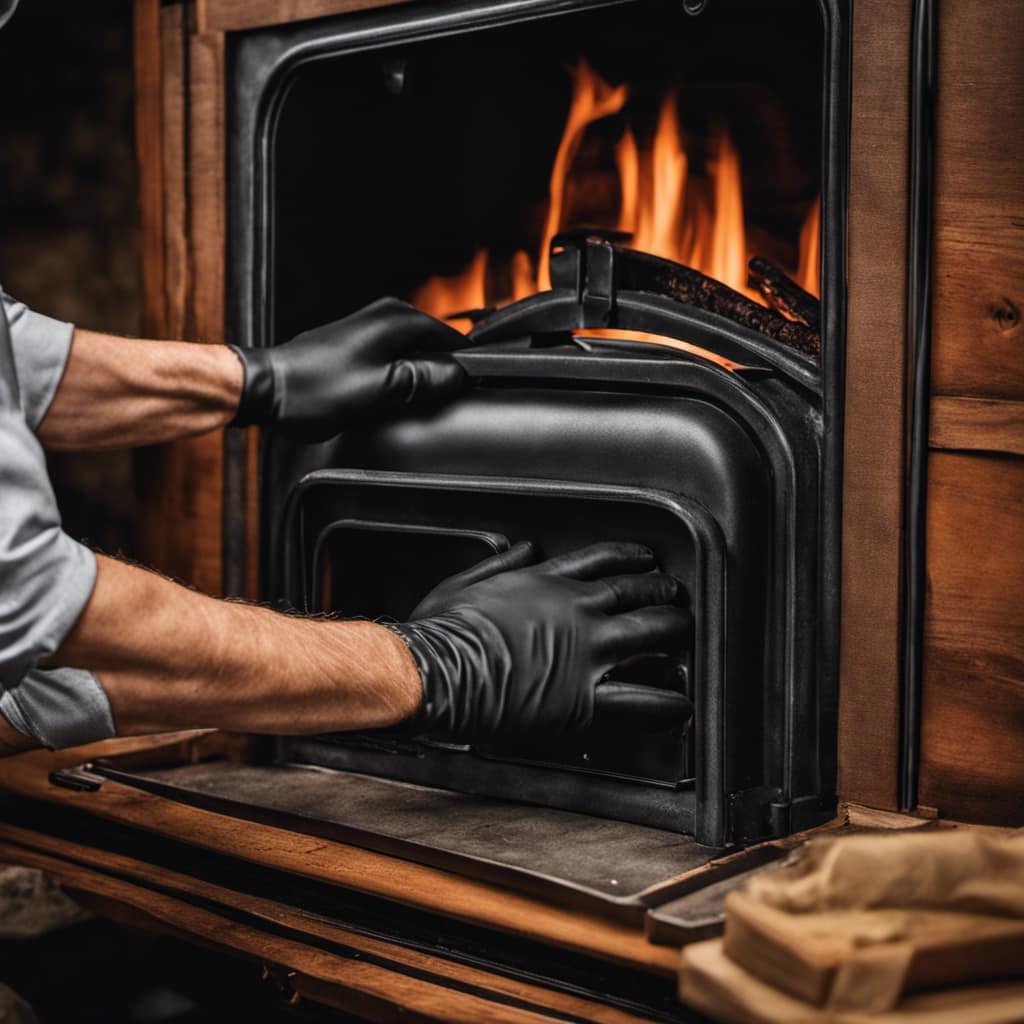
Adjusting the Fuel: Using the Right Amount of Wood
To optimize the burning process, it’s crucial to use the correct amount of fuel in my fireplace. This not only ensures a slow and controlled fire but also helps to reduce the risk of chimney fires and improve overall efficiency. Here are four essential factors to consider when adjusting the fuel:
-
Moisture content: The moisture content of the wood plays a significant role in fire intensity. Wet or green wood contains high levels of moisture, which leads to a slow and inefficient burn. It’s best to use seasoned firewood with a moisture content of around 20% for optimal results.
-
Alternative fuel sources: Exploring alternative fuel sources can also help achieve a slower burning fire. Options like compressed sawdust logs or wood pellets are designed to burn at a slower rate, providing a longer-lasting and more controlled fire.
-
Wood size and arrangement: Using smaller pieces of wood or splitting larger logs into smaller sections can help slow down the burn rate. Additionally, arranging the wood in a crisscross pattern allows for better airflow and promotes a more even burn.
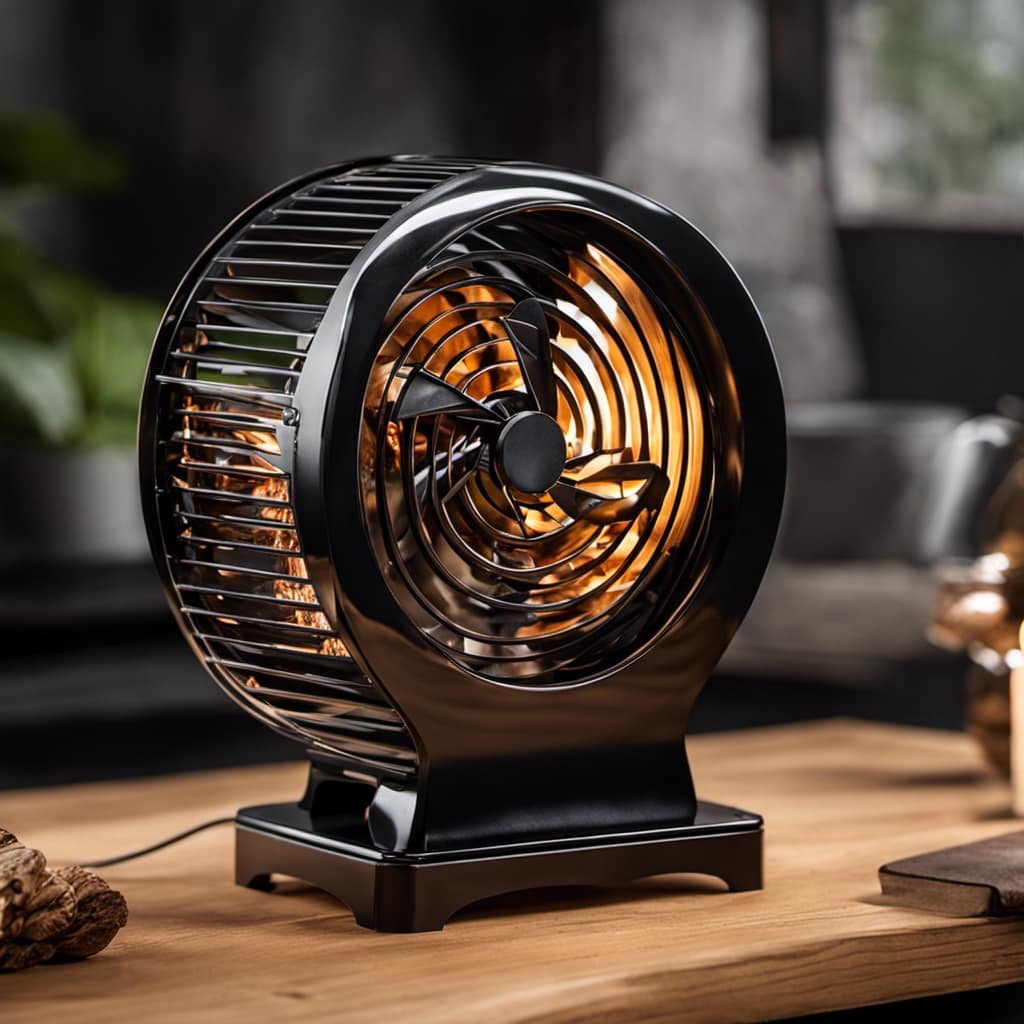
-
Draft control: Properly adjusting the air intake and damper settings can also help regulate the fire’s intensity. By reducing the amount of oxygen available to the fire, you can slow down the burning process and maintain a steady, controlled flame.
Managing the Firebox: Arranging the Logs for Optimal Burn
Arranging the logs in a crisscross pattern allows for better airflow and promotes a more even burn, resulting in a cozy and efficient fire.
When arranging the logs in the firebox, it’s important to create a stable base by placing two large logs parallel to each other at the bottom. Then, stack the smaller logs on top, alternating their direction to create a crisscross pattern.
This arrangement allows for air to circulate between the logs, providing oxygen for combustion and ensuring a steady fire. By maintaining the proper firebox temperature, you can slow down the fire and prevent it from burning too quickly. This will help to maximize efficiency and prolong the burn time of your wood stove.
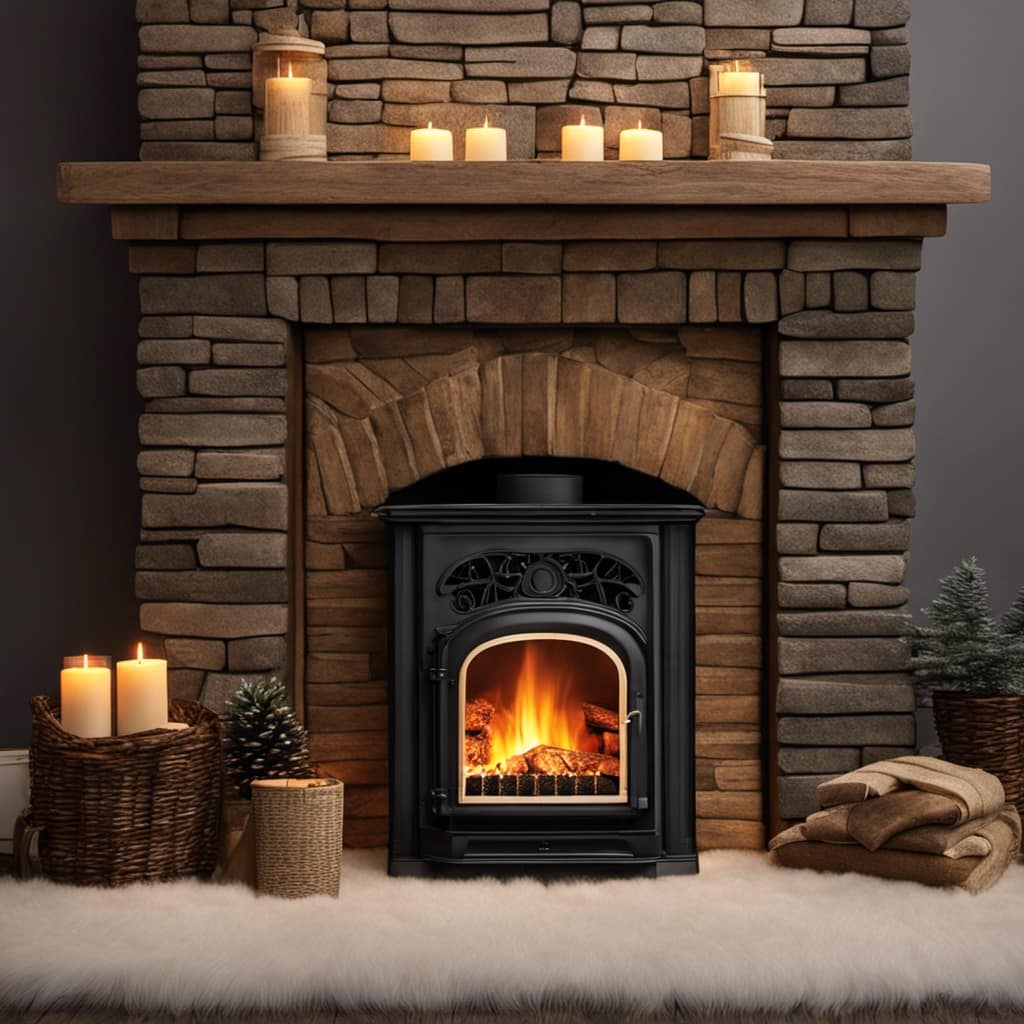
Now, let’s explore another technique for enhancing the efficiency of your fire: utilizing heat reflectors.
Utilizing Heat Reflectors: Maximize Efficiency and Slow Down the Fire
I find that using heat reflectors in my firebox really helps to enhance the efficiency and extend the burn time.
Heat reflectors are a great way to improve heat distribution and create a thermal barrier in your wood stove. Here are four reasons why you should consider using them:
-
Increased Efficiency: Heat reflectors work by reflecting the heat back into the firebox, preventing it from escaping through the walls of the stove. This helps to maximize the heat output and reduce wasted energy.
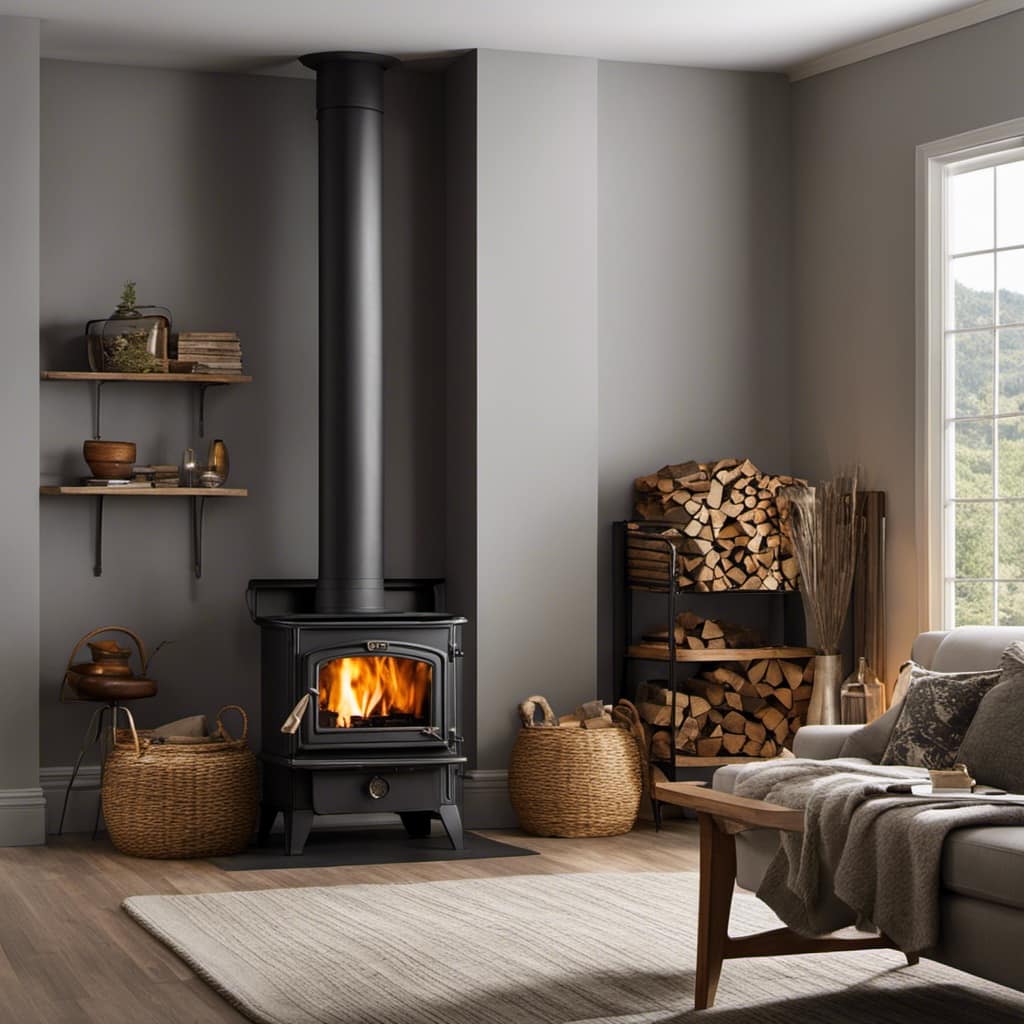
-
Extended Burn Time: By reflecting the heat back into the firebox, heat reflectors help to keep the fire burning longer. This means you can enjoy a cozy fire for a longer period of time without constantly adding more wood.
-
Improved Heat Distribution: Heat reflectors help to distribute the heat more evenly throughout the firebox. This ensures that all areas of the stove receive heat, resulting in a more consistent and comfortable heating experience.
-
Enhanced Safety: Heat reflectors create a thermal barrier between the fire and the stove walls, reducing the risk of overheating and potential damage to the stove. This adds an extra layer of protection and peace of mind.
Frequently Asked Questions
Can I Use Any Type of Wood in My Wood Stove?
Yes, you can use different types of wood in your wood stove. However, it’s important to properly season the firewood to ensure efficient burning and reduce the risk of creosote buildup.
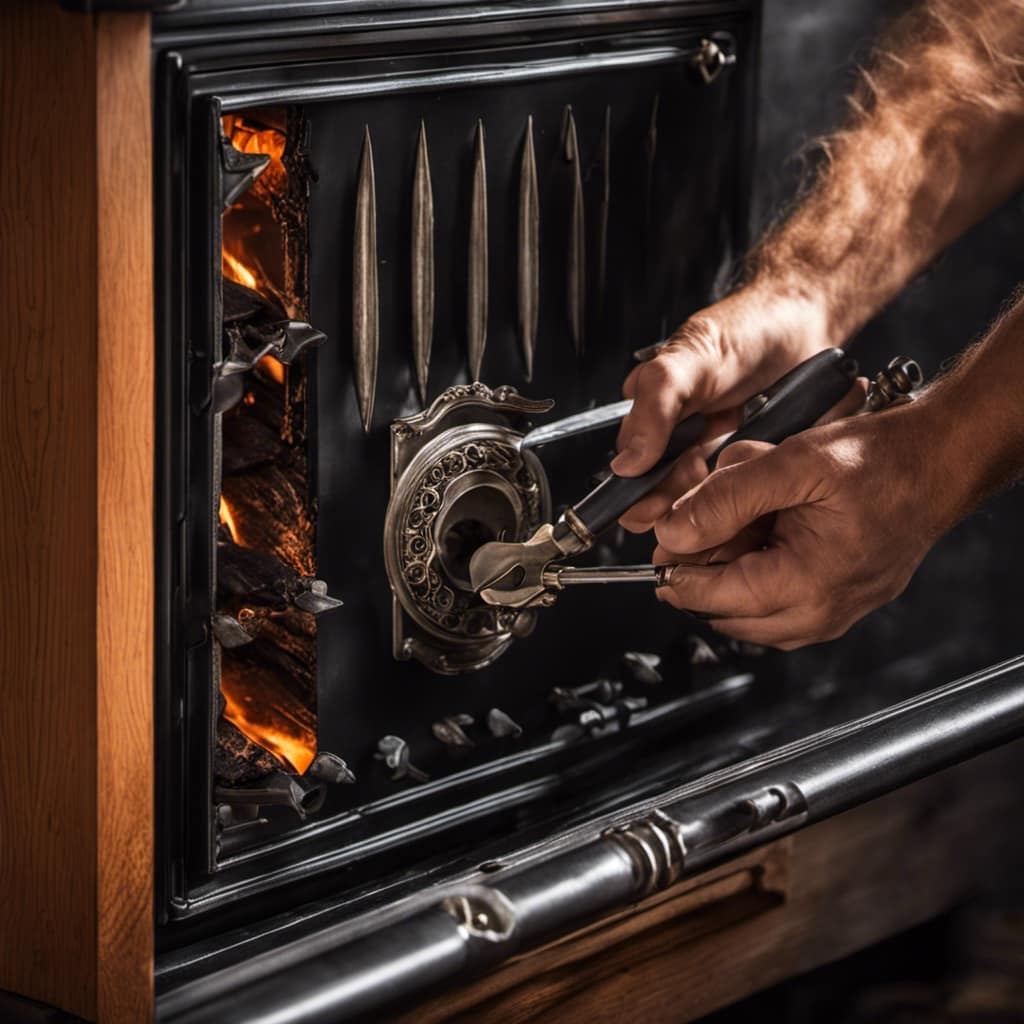
How Often Should I Clean the Chimney of My Wood Stove?
To properly clean a wood stove chimney, it is important to regularly maintain it. I clean mine at least once a year to prevent buildup and ensure safe and efficient operation.
Is It Safe to Leave the Wood Stove Unattended?
Leaving a wood stove unattended can pose potential dangers, such as fires or carbon monoxide buildup. To ensure safety, it is crucial to follow best practices, such as never leaving the stove unattended and regularly checking for any issues.
Can I Use a Fan to Help Slow Down the Fire in My Wood Stove?
Yes, you can use a fan to help slow down the fire in your wood stove. By using insulation and adjusting the dampers, you can control the airflow and reduce the intensity of the fire.
What Are the Signs That My Wood Stove Needs Maintenance or Repair?
When it comes to signs of wood stove maintenance needed or how to repair a wood stove, there are a few key indicators. Look out for excessive smoke, difficulty starting or maintaining a fire, or any visible damage to the stove itself.
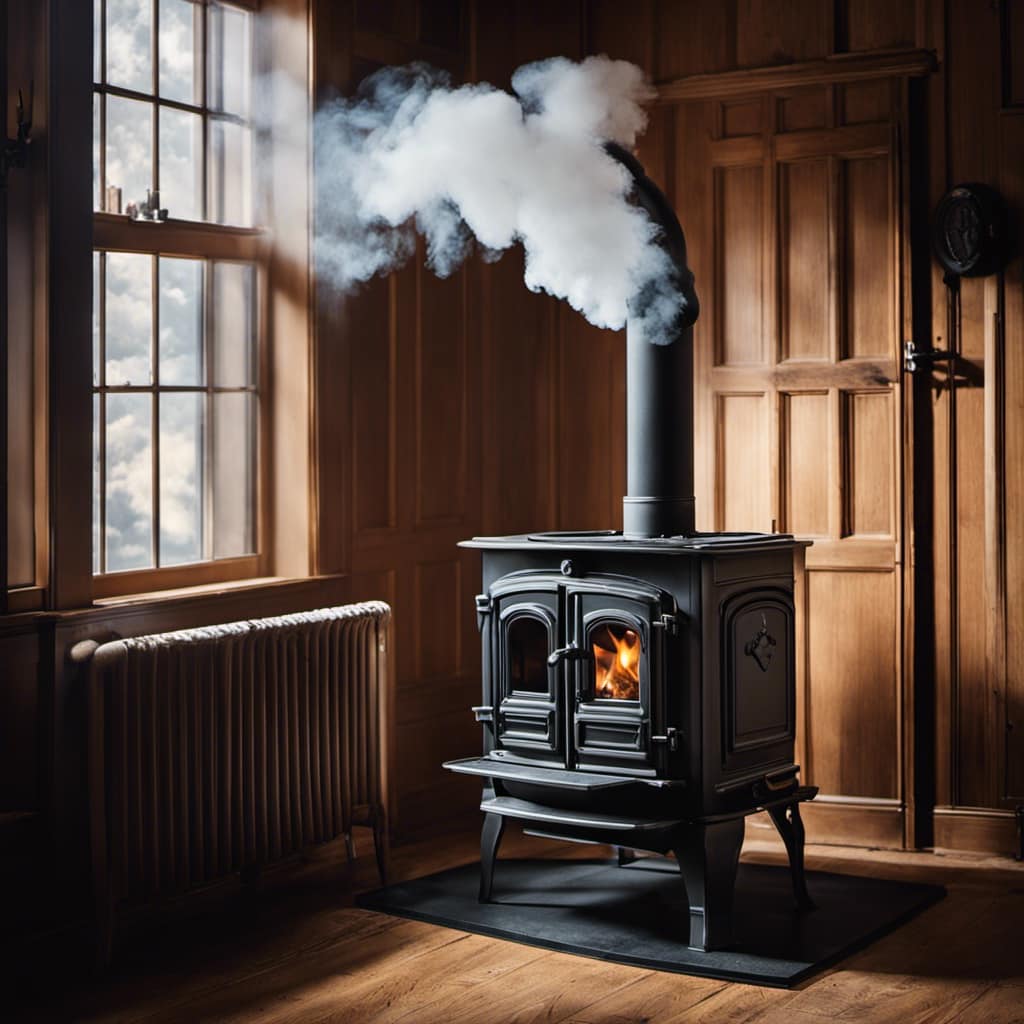
Conclusion
So next time you want to slow down the fire in your wood stove, remember these key steps:
- Understand the airflow
- Control the damper
- Adjust the fuel
- Manage the firebox
- Utilize heat reflectors
By following these techniques, you’ll be able to maximize efficiency and enjoy a slower burning fire.
So go ahead, sit back, and relax as you bask in the warmth of your wood stove, knowing that you’ve complete control over the fire.
Growing up surrounded by the vast beauty of nature, Sierra was always drawn to the call of the wild. While others sought the comfort of the familiar, she ventured out, embracing the unpredictable and finding stories in the heartbeat of nature.
At the epicenter of every remarkable venture lies a dynamic team—a fusion of diverse talents, visions, and passions. The essence of Best Small Wood Stoves is crafted and refined by such a trio: Sierra, Logan, and Terra. Their collective expertise has transformed the platform into a leading authority on small wood stoves, radiating warmth and knowledge in equal measure.


